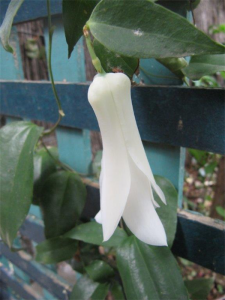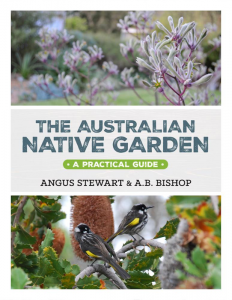
SOME readers might be shocked at the mere mention of Nerium oleander. Never plant this in the garden, all parts are poisonous, they say!
I recently spent time in the Provence area of France where, besides lavender production, Oleanders are seen everywhere. I don’t recall banner headlines of massed deaths due to Oleanders.
Yes, all parts of the plant are poisonous and it’s best to wear gloves when handling it.
LET’S take a look at other plants that may be poisonous that can be found in almost every garden without realising their poisonous nature.
A few years ago “The Canberra Gardener” listed more than 120 plants that are poisonous if the leaves are chewed or berries eaten, starting with the common potato through to daphne, cotoneaster, Digitalis (foxglove), laburnum (Golden Chain tree), wisteria, ligustrum, rhododendron and azaleas.
In reality, are you going to start ripping all these plants out? No.
So why pick on the oleander with a flowering time possibly longer than any other plant?
A small genus of a single species first introduced into Western gardens in 1596, it became an instant favourite. It can be seen growing along the Mediterranean and is a rival to camellias grown in more northern climes.
The most common variety has pink flowers although, with breeding, numerous forms are now available, which include a variety of flower colours with single and double flowers and even variegated leaves. They are ideal for growing in pots and take to very hard pruning in winter. If ever there was a plant suitable for our climate this is it.

Introduced into Western gardens in 1847, it is an evergreen with a strong twining habit and rosy-crimson, bell-shaped flowers up to 7cm long and 5cm wide that are borne singly in summer.
Pictured here is the pure white Lapageria var. albiflora growing in our garden in Watson in the shade of silver birch trees. It likes growing in lime-free soil in shade or semi-shade and doesn’t like exposure to long periods of strong sunlight. I understand that the Heritage Nursery at Yarralumla now has it in stock.
CONGRATULATIONS to the Yarralumla Nursery, winning a major award with the National Trust Heritage Awards 2015 for an outstanding project in working with GML Heritage on the Yarralumla Nursery Conservation Management Plan. GML Heritage has been at the forefront of heritage consulting for more than 25 years. Minister Mick Gentleman presented the award to Chris Ware, general manager of the Yarralumla Nursery.

 ONE of the most knowledgeable horticulturists regarding Australian native plants is the inimitable Angus Stewart.
ONE of the most knowledgeable horticulturists regarding Australian native plants is the inimitable Angus Stewart.
Well-known for his plant expertise and breeding skills and a presenter on the ABC’s “Gardening Australia”, Stewart’s new book “The Australian Native Garden” in conjunction with AB Bishop (Murdoch Books, rrp $49.99) is a must for any lover of Australian flora. Alternatively, this down-to-earth practical guide will encourage those who’d like to grow native plants, but think they are maybe too difficult.
Jottings…
- When sowing carrot seed, don’t cover with soil. Simply place shadecloth over the seeded area and remove it once seedlings show with a couple of leaves.
- Complete planting of dahlia tubers, putting the stake in first.
- Watch out for rose suckers from the rootstock and remove as soon as they appear.
- Harvest broad beans and freeze for later use. Chop up old foliage before putting on compost heap.
- Lightly prune Daphne plants after flowering. Take cuttings at the end of this month.
- Winner of the copy of the latest edition of “Yates Garden Guide” is John Bourke, of Pearce. Thanks to all who entered, it was a keenly sought prize.
Who can be trusted?
In a world of spin and confusion, there’s never been a more important time to support independent journalism in Canberra.
If you trust our work online and want to enforce the power of independent voices, I invite you to make a small contribution.
Every dollar of support is invested back into our journalism to help keep citynews.com.au strong and free.
Thank you,
Ian Meikle, editor




Leave a Reply